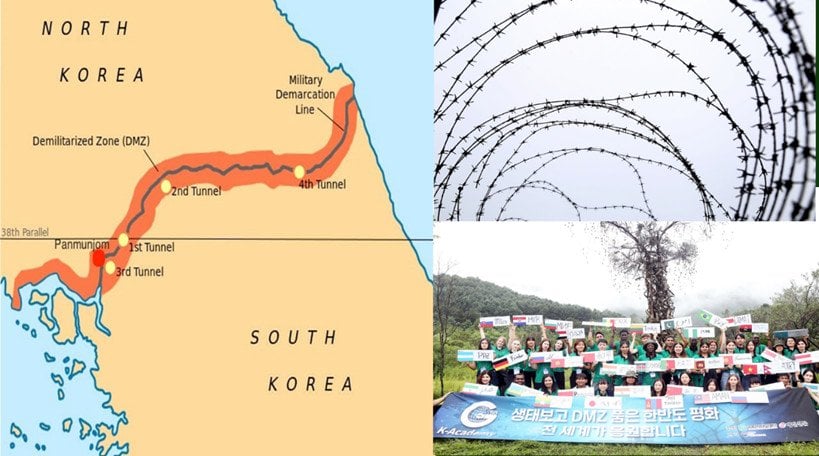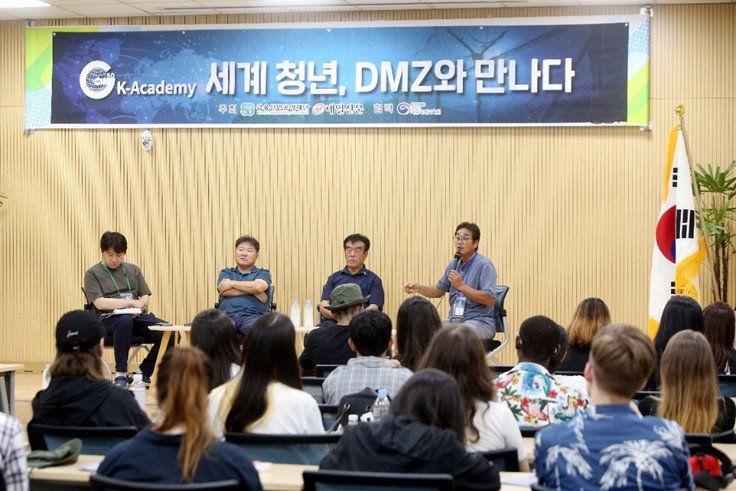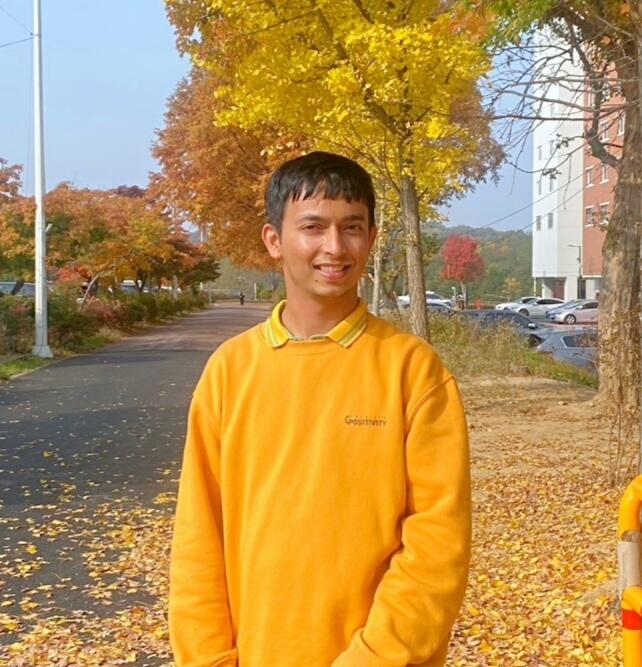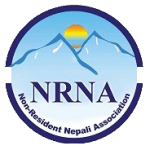The Demilitarized Zone (DMZ): A Symbol of Division and Hope of South and North Korea
 The outline of DMZ and a group photo under the “peace” tree.
The outline of DMZ and a group photo under the “peace” tree.
A group of 50 international exchange students embarked on a remarkable journey to explore the Korean Demilitarized Zone (DMZ) from August 21 to 24, 2023. This program, organized by the Naeil Newspaper in collaboration with the Ministry of International Education and other partners, aimed to offer students a unique glimpse into the DMZ's historical significance, environmental aspects, the lifestyle of local people, and its role as a symbol of both division and hope on the reunification of Korean Peninsula.
Following World War II, North and South Korea were separated along the 38th parallel, a decision made during the 1945 Potsdam Conference by the United States, the Soviet Union, and the United Kingdom. The 38th parallel was temporarily established as the dividing line, with the Soviet Union occupying the northern part and the United States controlling the southern part. Over time, this division solidified into two independent nations: North Korea and South Korea, persisting as one of the world's oldest and most enduring examples of international political division.
The Korean War erupted from 1950 to 1953 when North Korean forces, supported by the Soviet Union and China, invaded South Korea. The international community, mainly led by the United Nations and the United States, intervened primarily to support South Korea. While the war ended in 1953 with a ceasefire agreement, an official peace treaty was never signed, leaving the Korean Peninsula divided between North and South. This war had a significant regional impact and contributed to the tensions of the Cold War.
The DMZ was established in 1953 as part of the Korean Armistice Agreement to separate North and South Korea and prevent armed conflicts.
The international exchange students go on board on a journey from Seoul to Cheorwon and Inje, regions near the North-South Korean border, offering a unique blend of natural beauty and historical significance. In Inje, they enjoyed the thrill of rafting on the Daecheong River, a popular activity nationwide, while also savoring local cuisine.
The program included visits to historical and core sites (including the 2nd tunnel) of the DMZ, providing valuable insights into the history and current situation of the Korean Peninsula.
The local people living in Cheorwon and Inje expressed their anticipation of the reunification of the North and the South. These diverse experiences created lasting memories during their DMZ exploration.

[Picture: International students interacting with local DMZ residents]
As part of the program, all participating students wrote the word "peace" in their native languages, expressing their hope for the reunification of North and South Korea. They gathered under the Peace Tree, a symbol made of weapons and metal used during the Korean War, signifying the desire for peace on the Korean Peninsula.
Despite its name, the DMZ remains heavily militarized, serving as a constant reminder of the unresolved conflict between North and South Korea. Any incident within the DMZ has the potential to escalate into a larger conflict. However, the region appeared surprisingly peaceful, fostering hope for peaceful coexistence.
Human and Environmental Aspects
The DMZ, with its paradoxical characteristics, serves as a unique buffer zone symbolizing the enduring division between North and South Korea. It combines a heavy military presence, restricted access, and historical significance.
Unexpectedly, it has unintentionally become a sanctuary for endangered species and wildlife conservation efforts, thanks to the unanticipated consequences of the military standoff. The untouched landscapes of the DMZ stand in stark contrast to the surrounding areas, offering a glimpse of what the entire Korean Peninsula could look like without human intervention.
Cheorwon is celebrated as a sanctuary and refuge for the endangered Red-crowned Crane. These birds are known for remarkable migration. According to recent data, over 7,000 wintering cranes visited Cheorwon. To protect these birds the community has created a "Crane Peace Town" to promote coexistence between human life and ecosystems through crane experiential learning, fostering harmony with wildlife.
Beyond its militarized appearance, the DMZ also symbolizes hope. Numerous diplomatic and peace efforts have revolved around this region. The historic North-South summits held here serve as symbolic moments of reconciliation, fostering cautious optimism for peaceful coexistence and eventual reunification. Such events go beyond resolving misunderstandings between North and South Korea and foster mutual understanding and closeness.
Around the world, there is growing support for efforts aimed at Korean reunification. The enduring division is not only a regional concern but also a global one. The peaceful coexistence of North and South Korea holds the promise of stability in the region and fosters diplomatic relations on an international scale.
This news is expected to encourage and support international efforts for peace and stability on the Korean Peninsula.



Leave Comment